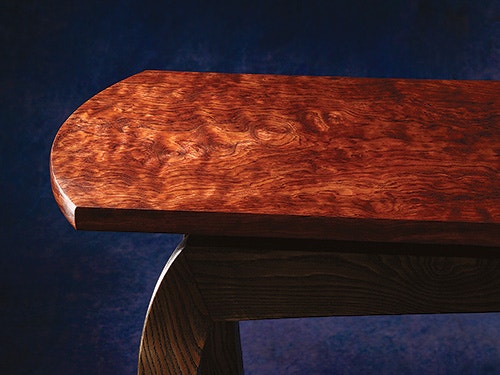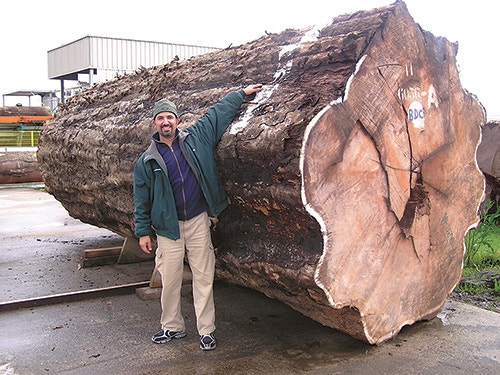Bubinga: Guibourtia tessmannii
Bubinga is wood derived from trees in the genus Guibourtia, named after the French pharmacologist Nicholas Jean Baptist Gaston Guibourt, who lived from 1790 to 1861. There are 16 known species of Guibourtia with 13 occurring in Africa and three in South America. Two species are commonly sold as bubinga (Guibourtia tessmanni and Guibourtia demeusei). Other trade names for wood from the genus are essingang, ovang, kevazingo and waka. Some species of Guibourtia also produce Congo copal.

Bubinga occurs through Nigeria, Cameroon, Equatorial Guinea, Central African Republic, Gabon and Democratic Republic of the Congo. It grows in swampy and inundated forests and near lakes and rivers. The tree can reach a height of 130 to 150 feet in huge girths with straight boles up to 70 feet long before the first limb. Trunks are often fluted or buttressed at the base, much like tupelo gums and cypress here in the U.S.
CITES Protected

The trees are considered rare in their native forests. Very little information is available about the natural history of the species, and management techniques are not well understood. This fact enhances the potential for rapid depletion of bubinga from the equatorial African forests. The problem is compounded by a high demand in China for bubinga as a substitute for rosewood.
Principally for that reason, three Guibourtia species were added to the Convention on International Trade in Endangered Species (CITES) Appendix II, effective January 2, 2017, as at-risk. Small amounts of bubinga are still permitted for personal use, but commercial, international trade of the lumber and products made from it are now closely regulated.
Shop Score Card
|
Uses: Fine furniture, carvings, inlays, flooring, tool handles, workbenches, veneer and for other purposes as a convincing rosewood substitute. Hardness: Hard, resists bending and denting. Country of Origin: West and central Africa. Workability: Coarse, open grain is sometimes straight but often swirling and interlocked, which mandates sharp cutting edges. Glues well. Finishing: Readily accepts common topcoats without special finishing considerations; polishes to a fine surface finish. Cost: Expensive, given limited availability. |
Keep the inspiration coming!
Subscribe to our newsletter for more woodworking tips and tricks


